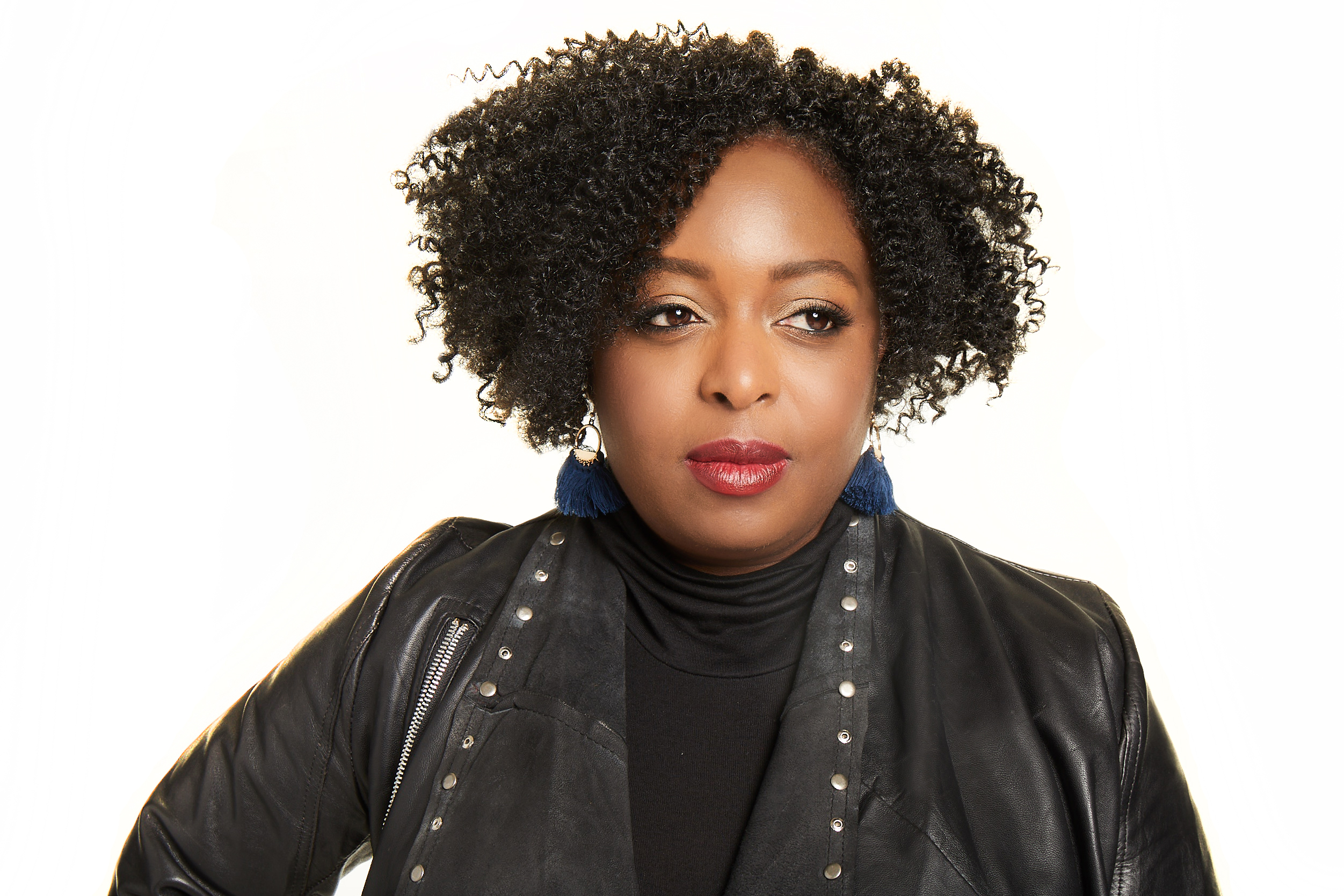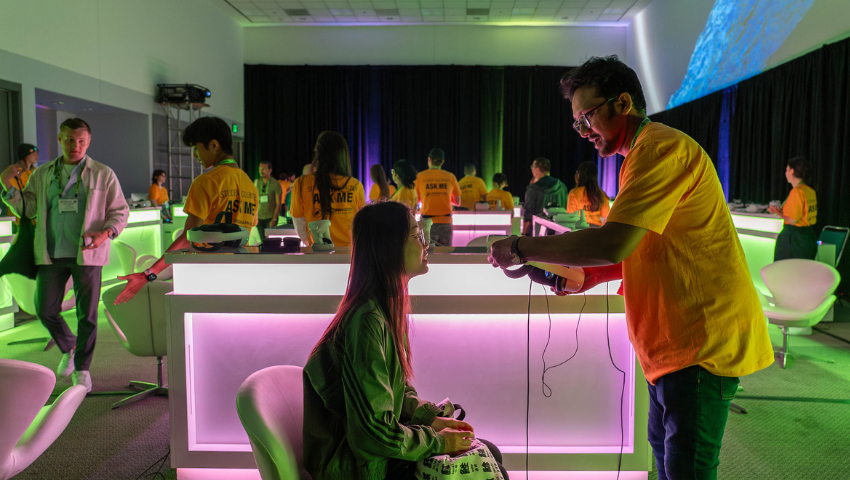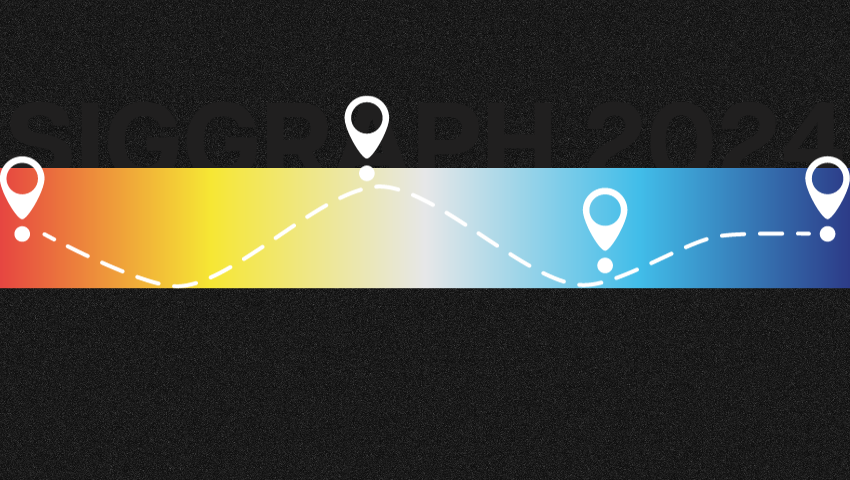In celebration of Black History Month and Black creators in computer graphics and interactive techniques, the SIGGRAPH conference team sat down with Black Girls CODE Founder Kimberly Bryant to discuss her background and what she is doing to inspire the next generation of computer wizards. After seeing a problem in the representation of women — women of color, in particular — in computer graphics, Kimberly set out to change the narrative. She now inspires thousands of young women to go after their dreams. Hard work, determination, and being surrounded a group of people you trust can go a long way. Read on to hear about Kimberly’s career journey and what got her to where she is today.
SIGGRAPH: Share some background information on your career to date. Where did you start out? What led you to founding Black Girls CODE?
Kimberly Bryant (KB): I graduated from college at the end of the ’80s, 1989 to be exact, and started my career with a Bachelor’s degree in electrical engineering and a minor in computer science. I worked at a large chemical manufacturing company before I transitioned into consumer products. I was determined to make my electrical engineering degree matter.
My next career transition was into the pharmaceutical industry. I moved out to the East Coast, then the West Coast, eventually settling in the Bay Area where I continue to reside. My career up until 2010 was about utilizing my electrical engineering degree in pharma and pharma biotech. However, once I got to the Bay Area, I saw web 2.0 blossoming in the early 2000s. The beginning of Facebook, Twitter, Foursquare, etc. All of this new technology was starting to take off. I wasn’t in the industry at the time, but I was in the midst of it by living in the Bay Area. That technology shift inspired me.
I knew I wanted to get into the tech field, and I really wanted to be in startups. I dipped my feet in the startup waters through meet and greets, conferences, and other opportunities that came up until I stumbled upon the chance to participate in diversity, equity, and inclusion (DEI) efforts in the tech industry.
Black Girls CODE was not on my radar. At first, I just wanted to see the representation that I wasn’t seeing in the startup arena, and my daughter was in middle school with a big computer science interest at the time. Every time I put her in a class to learn more about it, there were no girls. That was shocking to me. That is what planted that seed for me. I saw a real problem within the industry and realized that younger generations, like my daughter, needed better experiences and better representation.
SIGGRAPH: What is the best career advice you ever received? Who gave it?
KB: Easy one. “Never eat lunch long.”
The summer before I went to Vanderbilt, I happened to be working an internship in HR at the FedEx headquarters. The VP of HR at FedEx, a well-respected Black man, saw me come early to work, leave late, work hard. He noticed my determination. One day, he pulled me aside and said, “I see how hard you work and how serious you are.” Then he said, “Don’t use your lunch period for nonsense, don’t waste away this time. Lunch is an opportunity to get to know your superiors, to network, to create relationships.” That concept stuck with me. I never knew how important networking would end up being for me in my career. It became a skill of mine.
Building a network has been so pivotal. When I started Black Girls CODE, one of the strongest things I had working for me was my network. It was my safe space. The relationships that let me land and fall and continue to support me.
SIGGRAPH: In your opinion, what technology doesn’t get a lot of love but has greatly improved the world?
KB: Web3 or blockchain. It has started to get a lot of attention, but I believe that blockchain can change the world. The decentralized protocol of the blockchain is transformative. It changes how power and influence moves in the technology space in a way that is different from Web2. The opportunity with blockchain is that it creates a more decentralized, and potentially a more equitable, access for how people are managed, created, transcribed, etc. I believe the opportunity cost is worth it in terms of bringing more individual and diverse voices into this space.
SIGGRAPH: What excites you most about your work? Where does your passion come from?
KB: What excites me most about my work is the concept of innovation and creation. I see myself as a creative, although I don’t see myself as an artist. I love the concept of dreaming up something new and seeing that come to life. I think that is one of the things I have gained the most enjoyment and fulfillment out of seeing girls in Black Girls CODE. They can come to a class on a Saturday, knowing nothing, and be able to see their ideas come to life on the screen.
Before COVID-19, I loved going into the workshops and seeing the girls running around and showing you their creations with so much pride. I am a builder at heart, and being able to see these bright, young women, unsure and shy, be able to come into their own is priceless. It has been 10 years now, and [I still love] seeing these same women become leaders on their own and build their own companies. It’s more than I could ever ask for. I didn’t expect it to bring this much joy. I am still excited everyday.
SIGGRAPH: What is one contribution you’ve made to the industry that has been most meaningful to you?
KB: I think for me and my work to date, one of the biggest contributions I have made is creating Black Girls CODE and making it okay to be a Black girl who codes. I think that is important. When “Hidden Figures”, the movie, came out, we took over 1,000 girls to see it in theaters. I remember vividly seeing it with my daughter for the first time. When Taraji’s [character Katherine Johnson] stands up for herself, I could see how that scene affected my daughter, how the movie affected my daughter. The sense of pride she has as a young Black women is palpable. Birthing this idea and creating Black Girls CODE, and giving women a voice, is my biggest contribution. Creating this organization has totally shifted the conversation and narrative about who you think about when you think of a coder.
SIGGRAPH: What’s one thing you keep at your desk that you can’t live without, or that inspires you?
KB: I keep two pictures on my desk: one of my daughter graduating from high school, and one of when my daughter went to college. A good portion of my staff on the West Coast went with me to move her into her college dorm. Those pictures represent a transition, high school was hard for her, and the triumph of getting across that finish line was huge. It was a rough year for both of us, and being able to share that experience of moving her in with the Bay Area team, it was moving. We videotaped the whole thing, she has the picture we all took together in her dorm, as well. It really showed me how we show up for our girls and create a safe space. The little girl who graduated high school was not the same girl who went to college. It showed me what showing up and love and support looks like, and what it can do. It makes you think, what if we could give that to everyone?
SIGGRAPH: Share some of your favorite resources you frequent for inspiration.
KB: I am a really big art fanatic. I am not an artist, but I love art. I can spend a big chunk of time on Artsy, and most of my feed on Instagram is artists. Art and nature are things that truly move me. That is where I get a lot of my inspiration — seeing creatives doing what they are doing and breathing beauty into the world. My other big obsession is gardening. I was blessed to have a little bit of a yard during COVID-19, and spending time in nature restored me. I would’ve lost my mind without those two things.
SIGGRAPH: Have you ever been to a SIGGRAPH conference? If yes, what is your fondest SIGGRAPH conference memory? If no, how do you think educational opportunities like a conference contribute to the broader computer science community?
KB: I have never been to a SIGGRAPH conference, but I believe a conference is a great opportunity to convene. I am big on the idea of community — one of the things we certainly lost the most during the pandemic was the ability to convene as a community. You don’t know what is new, you can’t get insight, you can’t created fruitful partnerships or learn together. Being able to bring together a community of thought partners [and leaders] allows us to move the needle together. That is why conferences are so important, we must move the needle collectively. Conferences allow us to exchange ideas that help us move the industry forward.
SIGGRAPH: Tell us a Black computer graphics/science pioneer you admire and why.
KB: Dr. Shirley Jackson is a pioneer that I highly respect. She is brilliance personified. She was one of the first Black women to receive her Ph.D. from MIT, and started her path early in computer science. Not only has she had a lot of success in her career but she has opened up pathways for other female students to succeed in this field. She is a woman that has paved the way in the sciences, and I would love to hear us talk about her more.
SIGGRAPH: What advice do you have for the next generation entering computer graphics/computer science?
KB: My advice to young people is be open to failure, not as something that is a negative but something that gives us the opportunity to learn. If we hold ourselves back from taking chances when we need to step out, we limit our ability to learn and grow. As young people, we need to learn to take risks and learn more and take chances. Accepting failure as a learning tool is important. It will open up so many opportunities for the future that the next generation may not even know is out there right now. The future of innovation is really just starting to be written, the younger generation needs to go out there and discover it.
To read more career profiles, click here.
Kimberly Bryant is the founder and CEO of Black Girls CODE, a non-profit organization dedicated to “changing the face of technology” by introducing girls of color (ages 7-17) to the field of technology and computer science with a concentration on entrepreneurial concepts. Prior to starting Black Girls CODE, Kimberly enjoyed a 20-year engineering and technical leadership career in the pharmaceutical and biotech industries for various Fortune 50 companies, such as Genentech, Merck, and Pfizer. Since 2011, Kimberly has helped Black Girls CODE grow from a local, grassroots initiative, serving only the Bay Area, to an international organization with 14 chapters across the U.S. and in Johannesburg, South Africa. Black Girls CODE has currently reached over 18,000 students and continues to grow and thrive. Kimberly is a nationally recognized thought leader for her work to increase opportunities for women and girls in the technology industry and has received numerous awards for her work.. Kimberly has been awarded the Jefferson Award for Community Service for her work to support communities in the Bay Area, named by Business Insider on its list of “The 25 Most Influential African-Americans in Technology,” and included in The Root 100 and the Ebony Power 100 lists in 2013. Kimberly has been named one of Fast Company’s Most Creative People. In 2015, the White House honored her as a Champion of Change for her work in tech inclusion , and she received an Ingenuity Award in Social Progress from the Smithsonian Institute among many other awards and recognition.. She has spoken nationally and internationally on diversity, equity, and inclusion at conferences and is a thought leader in tech education for underserved students.




